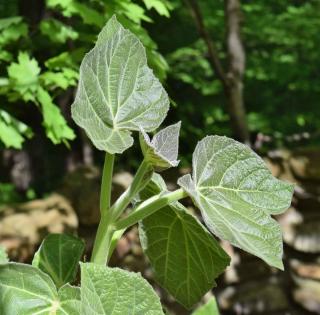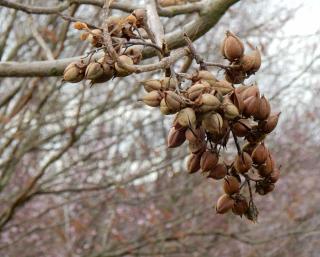

Paulownia is a fast-growing tree that reaches a stupendous size, and its purple flowers that appear in spring are just as amazing.
Paulownia key facts
Botanical names: Paulownia tomentosa, Paulownia imperialis
Common name – Imperial Paulownia
Family – Scrophulariaceae
Type – Shade tree
Bearing – round
Height – up to 60 feet (20 m)
Breadth – 25 to 40 feet (8 to 12 meters)
Exposure – full sun
Soil – any type, well drained
Hardiness – hardy
Paulownia growth rate – fast
Foliage – deciduous
Flowering: spring
Flowers appear in spring, right before the tree unfurls its leaves. Oval fruits appear not long afterwards. These fruits are what help distinguish paulownia from its “cousin”, Catalpa.
Though it isn’t very picky regarding the type of soil, it does love growing in moist, well-drained and humus-laden soil.
Its most important requirement is exposure: you must give your tree a wide sunny spot for it to grow well.
Planting, for paulownia, should take place in fall if possible, in order to ensure proper settling in. You can consider planting in spring, but you’ll have to water much more often.
Once you’ve found the right spot, follow these few steps to plant your tree:
 Dig a planting trench that’s pretty large.
Dig a planting trench that’s pretty large.There isn’t much care that you have to give the tree:
 Not necessary. The few times you’ll actually need to prune it are:
Not necessary. The few times you’ll actually need to prune it are:
 To multiply your tree and get new specimens, simply sow the seeds in pots in a cold frame, with lots of light but sheltered from freezing. This may be started in fall or spring.
To multiply your tree and get new specimens, simply sow the seeds in pots in a cold frame, with lots of light but sheltered from freezing. This may be started in fall or spring.
Resistant and vigorous, paulownia is vulnerable neither to disease, nor to pests.
The blazing-fast growth and size of the Paulownia tomentosa tree means it’s used mostly in large gardens and parks, either as a standalone or to form large rows.